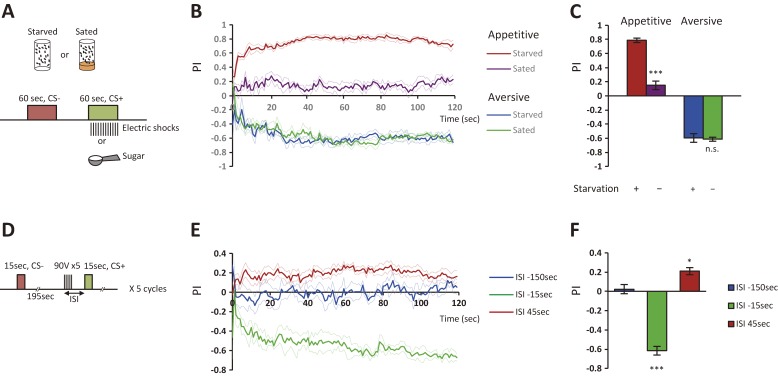Figure 3.
Temporal profiling of the conditioned odor choice. (A) Starved or sated wild-type flies are conditioned with sugar reward or electric shock punishment. Flies are immediately tested after conditioning. (B) Time course of the memory performance. Throughout this study, bold and transparent lines indicate the mean ± s.e.m. n = 4 for each group. Estimated thalf = 2.81 sec for appetitive protocol for the starved flies, 3.70 sec and 6.25 sec for aversive protocol for the starved and sated flies, respectively (see Materials and methods for details). (C) The performance indices averaged for the last 60 sec. Bars and error bars indicate the mean ± s.e.m. The performance of the sated groups is compared to the starved groups by a two-tailed unpaired t-test. ***: P < 0.001, n.s.: P > 0.05. (D) Wild-type flies are trained with different inter-stimulus-intervals (ISI). The negative ISI value means the odor presentation precedes the onset of the first shock. ISI = −150 sec is used as an unpaired control. Flies are tested 15 min after conditioning. (E) Time course of conditioned odor choice. n = 4, 4, 8. Estimated thalf = 6.65 sec and 3.27 sec for the groups of ISI = −15 sec and 45 sec, respectively. (F) Averaged performance over the last 60 sec. Groups trained with ISI = −15 sec (forward) and ISI = 45 sec (backward) are compared to the groups with ISI = −150 sec (unpaired). ***: P < 0.001, *: P < 0.05; a two-tailed unpaired t-test followed by Bonferroni correction.

